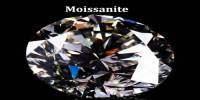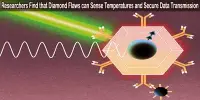A method for pulling a macroscopic object with laser light has been created by researchers. This is one of the first instances of using laser pulling on larger objects, despite the fact that small optical tractor beams have been demonstrated before.
Levitation and rotation are two examples of the many optical manipulations that can be done with light’s energy and velocity. For instance, optical tweezers are frequently used scientific tools that grip and move microscopic things like atoms or cells using laser light. For the past ten years, researchers have been working on a novel optical manipulation technique that would employ laser light to produce an object-pulling optical tractor beam.
“In previous studies, the light pulling force was too small to pull a macroscopical object,” said research team member Lei Wang from QingDao University of Science and Technology in China. “With our new approach, the light pulling force has a much larger amplitude. In fact, it is more than three orders of magnitudes larger than the light pressure used to drive a solar sail, which uses the momentum of photons to exert a small pushing force.”
Wang and coworkers show how macroscopic graphene-SiO2 composite particles they created can be employed for laser pulling in a rarefied gas environment in the Optica Publishing Group journal Optics Express. This type of environment has a pressure much lower than atmospheric pressure.
“Our technique provides a non-contact and long-distance pulling approach, which may be useful for various scientific experiments,” said Wang. “The rarefied gas environment we used to demonstrate the technique is similar to what is found on Mars. Therefore, it might have the potential for one day manipulating vehicles or aircraft on Mars.”
Our work demonstrates that flexible light manipulation of a macroscopical object is feasible when the interactions between the light, object and medium are carefully controlled. It also shows the complexity of laser-matter interactions and that many phenomena are far from being understood on both on macro and micro scales.
Lei Wang
Creating enough force
The researchers created a unique graphene-SiO2 composite structure specifically for laser pulling in the recent work. The structure produces a reversed temperature difference when exposed to laser light, making the side farthest from the laser hotter.
Gas molecules on the back of graphene-SiO2 composite-made objects receive more energy when exposed to a laser beam, which causes them to move toward the light source. The researchers were able to create a laser pulling force powerful enough to move macroscopic objects by combining this with the low air pressure in a rarified gas environment.
The researchers created a torsional or turning pendulum device using their graphene-SiO2 composite structure and used it to make a visual demonstration of the laser tugging phenomenon. The drawing force of the laser was then measured quantitatively using a conventional gravity pendulum. Both devices were about five centimeters long.
Repeatable, tunable pulling
“We found that the pulling force was more than three orders of magnitudes larger than the light pressure,” said Wang. “In addition, the laser pulling is repeatable, and the force can be tuned by changing the laser power.”
Before the technique would be useful, several elements would need to be improved, the researchers warn. This work is simply a proof of concept. For instance, a methodical theoretical model is required to correctly forecast the pulling force of the laser for given factors such as the shape of the item, laser intensity, and the surrounding medium. Additionally, they want to enhance the laser pulling technique to make it more adaptable to various air pressures.
“Our work demonstrates that flexible light manipulation of a macroscopical object is feasible when the interactions between the light, object and medium are carefully controlled,” said Wang. “It also shows the complexity of laser-matter interactions and that many phenomena are far from being understood on both on macro and micro scales.”
















